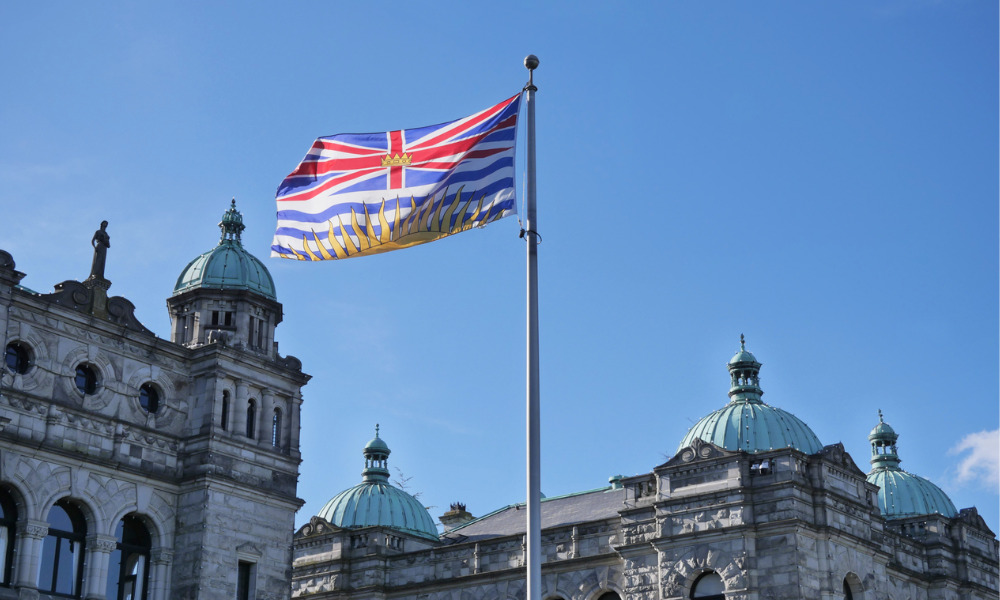Lawyer Sarah McDonald discusses Alitus, Lynch and what it’s like working as an intervener

This month, two different courts have been hearing two different cases from two different provinces in two different regions of the country. But one common element links these cases enough for one intervener to get involved.
Claims of environmentally related constructive taking – or de facto expropriation – drove Ecojustice Canada Society to participate as an environmental defender and a legislation proponent.
“We do strategic litigation. Our goal is to set strong, progressive environmental precedents to strengthen environmental laws and to address the ongoing environmental crises,” says Sarah McDonald, a lawyer with the organization.
Most Read
The two cases in question are Altius Royalty Corporation v Her Majesty the Queen in Right of Alberta and City of St. John's v. Wallace Lynch, et al.
Lynch was argued before the Supreme Court of Canada on appeal from the Court of Appeal of Newfoundland and Labrador. The Alberta Court of Appeal heard Altius and McDonald argued on behalf of Ecojustice.
As Ecojustice explains, “These cases originated when companies and landowners alleged that environmental regulations enacted by governments amounted to ‘constructive taking’ (also referred to as ‘de facto expropriation’). Constructive taking is when government flexes its regulatory powers to the extent that it deprives an owner of the use and enjoyment of their property.”
McDonald notes that constructive taking was addressed recently by the Supreme Court of Canada in Annapolis Group Inc. v. Halifax Regional Municipality. Ecojustice also intervened in that case. “The court clarified the meaning of the constructive taking test, and specifically the first branch of the test, which is about the government needing to acquire a beneficial interest in the property,” says McDonald.
“The Altius case was one of the first – if not the first – applications of the Annapolis case, the Supreme Court’s decision in Annapolis, at the appellate level. And it specifically turned on the first part of the test, which is the part that the Supreme Court focused on in its decision,” she says.
McDonald explains that Altius owns a royalty in the Genesee mine in Alberta, which produces thermal coal, which is burned in power-generating plants. Altius was seeking $190 million in compensation for decisions by the federal and provincial governments to phase out coal-fired power generation in a measure designed to combat climate change. That claim was dismissed by the Court of King’s Bench of Alberta, which said the test had not been passed.
“With respect to the first part of the constructive takings test, Altius says that the beneficial interest the governments gained was essentially the actual mitigation of climate change: public health benefits like fewer heat-wave or heat-related illnesses, some pollution-related things like cleaner air, less money spent on health care, that sort of thing, which I think is just an absurdly broad interpretation of the first part of this constructive takings test, and is really concerning in terms of the potential expansion of constructive takings to encompass all sorts of government actions,” McDonald says.
She describes Lynch as being “further down the line” as it deals with how to value a property that has been de facto expropriated. “Specifically, it’s about the application of a principle called the Pointe Gourde principle, which says that in terms of actual appropriation – du jure appropriation – when you value a property that has been expropriated, you have to ignore what it refers to as the expropriation scheme: measures that were taken in advance of the actual expropriation decision, but that affect the value of the property in such a way that it would be unfair to the property owner to consider those measures taken when you’re determining the compensation to be paid to the property owner.”
The Lynch family was prevented from developing a property granted to the family in 1917 that was subsequently subjected to 1994 regulations designed to preserve the watershed that provides drinking water for the City of St. John’s. The Lynches believe the property should be valued as if no regulations prevented development. The applications judge determined that the compensation payable was based on the existing watershed zoning. An appeal was allowed, the court decided that watershed zoning should be ignored for evaluation, and the question of valuation was addressed to the Board of Commissioners of Public Utilities.
McDonald says Ecojustice is intervening because applying the Pointe Gourde principle so broadly would result in “windfall compensation to landowners and would deter effective governmental environmental regulation.”
According to McDonald, historically, constructive taking has been rare, so there is not a lot of case law on it. With so few court decisions and no other interpretation of the Supreme Court decision on the constructive takings test, the Altius decision could set the stage for the future.
“If the courts interpret the Supreme Court decision so as to make the first part of the test essentially meaningless or redundant, then it would open up the law to many more constructive takings claims than there have been historically. If courts try to rein in the Supreme Court decision a bit and interpret it in what I think is the correct way, which is much more narrowly than the appellants argued in Altius, then I think it will mean that constructive takings will remain rare,” says McDonald.
(The second part of the constructive takings test involves the removal of all reasonable uses of the property, not just a reduction in property value. McDonald, however, says that courts are inconsistent about what all reasonable use means and its interpretation is still open to debate.)
She adds that it is harder to predict the impact of Lynch. Still, she notes that if the court says Pointe Gourde applies precisely the same way in de jure expropriation, land owners might have some motivation to be litigious in the hunt for large compensation awards.
Usually, Ecojustice prefers to intervene in Supreme Court of Canada cases, as it feels it can be most effective at that stage. Still, the Altius case was important enough and complicated enough, not to mention possibly precedent-setting, that the organization saw a role to play as the only environmentally-oriented intervener.
In a Supreme Court of Canada case, McDonald says up to 20 like-minded groups may work together on an organized strategy. Ecojustice could decide to intervene on its behalf or on behalf of a partner like an NGO or a non-profit like the David Suzuki Foundation, which Ecojustice represented in a carbon-pricing case. Co-operation and co-ordination are essential to avoid duplicating legal arguments because typically, to get intervener status, “you have to show that your perspective is distinct from the parties, that you’ll make unique and useful submissions to the court and that you won’t raise new issues or introduce new evidence,” she explains.
The complexity of environmental laws, regulations and court decisions in Canada has increased over time, and presenting intervening arguments before a court has become an equal exercise in complexity. For example, Ecojustice’s arguments in Altius drew on Canadian case law that said environmental regulation to achieve a policy goal does not create an advantage or fulfill the first part of the test. US case law was also invoked, as was the American doctrine of police power, which McDonald says “is the fundamental authority of government to regulate in the public interest.” Ecojustice also argued that climate change is an existential threat and that the Annapolis decision addresses the foreseeability of measures, such as regulations, to affect the property.
In addition, McDonald spoke of the nature of private contracts initiated by the provincial government and what effects will result if “we start allowing constructive-takings claims for government contracts that have indirect effects on someone else’s business. That opens up a whole new can of worms, given the number of government contracts out there.” (The provincial government signed a deal with the power plant owner not to shut down but to move away from coal in exchange for government compensation.)
Although decisions aren’t expected any time soon in either Lynch or Altius, being in court allowed McDonald to form an opinion about how the Alberta court might rule in Altius.
“I would say that the court had a lot more questions and seemed to indicate that it was a lot more concerned about the arguments put forward by the appellant. They seemed a bit skeptical of the scope of the first part of the test that the appellant was proposing. They seemed skeptical of the argument that all of these public-health benefits and climate-mitigation benefits could really constitute a beneficial interest for the purpose of the first part of the test.”







